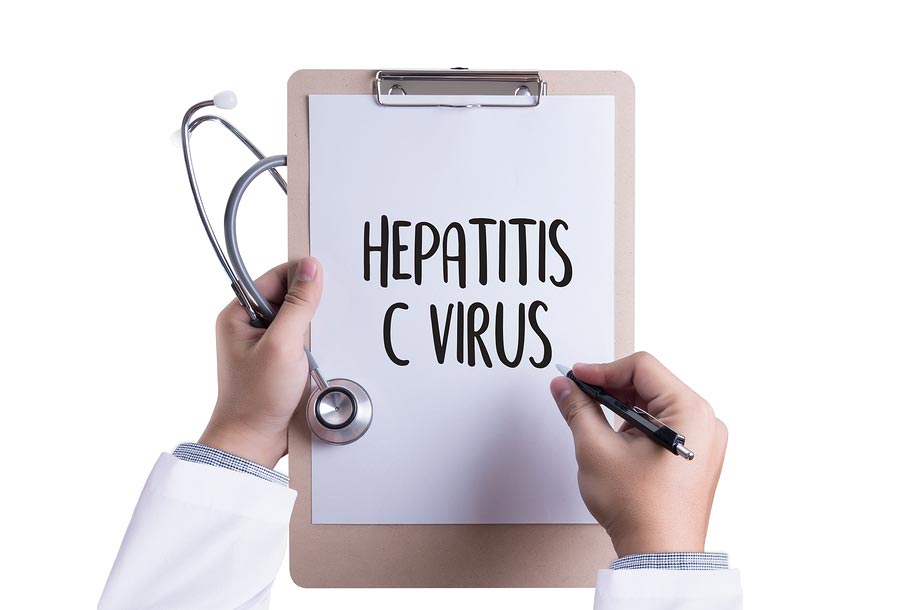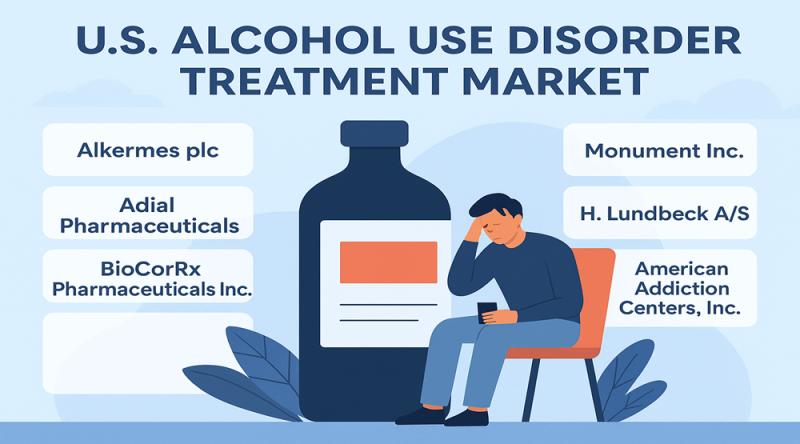Hepatitis C is a silent epidemic in the U.S., but this small clinic is proving it doesn’t have to be – CBS News

Report on an Effective Clinic Model for Hepatitis C Elimination and its Alignment with Sustainable Development Goals
Introduction: The Public Health Challenge of Hepatitis C
Hepatitis C represents a significant public health challenge in the United States, with an estimated 4 million individuals affected. The disease, often asymptomatic in its early stages, can lead to severe long-term health consequences, including cirrhosis and liver cancer. Despite the availability of curative treatments for over a decade, access remains limited for a large portion of the affected population. This report examines the successful intervention model of the La Bodega clinic in Buffalo, New York, and analyzes its direct contributions to achieving key United Nations Sustainable Development Goals (SDGs).
Advancing SDG 3: Good Health and Well-being
The La Bodega clinic at Erie County Medical Center has developed a highly effective model that directly addresses SDG 3, which aims to ensure healthy lives and promote well-being for all. Specifically, the clinic’s work contributes to Target 3.3: to end the epidemic of hepatitis by 2030.
Key Components of the La Bodega Model
- Rapid Diagnosis and Treatment: Through the use of new FDA-approved testing machines, the clinic can confirm a patient’s diagnosis and initiate treatment within a single visit.
- High Efficacy Rate: The model has demonstrated remarkable success, achieving a 98% cure rate among its more than 7,000 patients.
- Accessibility and Efficiency: The streamlined process overcomes common barriers to care, proving that widespread treatment is feasible.
Fostering SDG 10: Reduced Inequalities
A core principle of the La Bodega clinic is the reduction of inequalities in healthcare access, a central tenet of SDG 10. The clinic actively works to eliminate barriers that disproportionately affect vulnerable populations.
Creating an Inclusive Healthcare Environment
- Stigma-Free Services: The clinic cultivates a safe and welcoming atmosphere, exemplified by its “come one, come all” motto. This is particularly crucial for patients in recovery from addiction, who may face judgment in traditional healthcare settings.
- Addressing a National Disparity: With less than one-third of Americans with Hepatitis C having received treatment, La Bodega’s accessible model provides a direct countermeasure to this national inequality in healthcare delivery.
Economic Impact and Contribution to SDG 1 (No Poverty) and SDG 8 (Decent Work and Economic Growth)
The financial implications of untreated Hepatitis C are substantial, affecting both individuals and the national economy. The clinic’s model offers significant economic benefits that align with SDG 1 and SDG 8.
Financial and Economic Benefits
- Alleviating Individual Financial Burden: Untreated Hepatitis C can cost a patient up to $46,000 annually in medical expenses. By providing a cure, the clinic helps prevent individuals from falling into poverty due to healthcare costs (SDG 1).
- Promoting Economic Productivity: Curing patients allows them to return to health and participate fully in the workforce, contributing to decent work and economic growth (SDG 8).
- Generating National Savings: Widespread early treatment of Hepatitis C is projected to save the U.S. government an estimated $7 billion over ten years, freeing up public funds for other development priorities.
Policy Advancement and SDG 17: Partnerships for the Goals
The success of localized models like La Bodega has catalyzed policy discussions at the national level, highlighting the importance of collaboration as outlined in SDG 17 (Partnerships for the Goals).
A National Strategy for Hepatitis C Elimination
A bipartisan legislative effort is underway to secure federal investment for a national plan to eliminate Hepatitis C. This initiative represents a critical partnership between:
- Government bodies
- Healthcare providers like La Bodega
- Civil society
Such collaboration is essential for scaling up successful interventions and achieving the ambitious targets set forth by the Sustainable Development Goals.
SDGs Addressed in the Article
- SDG 3: Good Health and Well-being: The article’s central theme is combating the Hepatitis C epidemic, improving access to treatment, and achieving high cure rates, which directly aligns with ensuring healthy lives and promoting well-being.
- SDG 10: Reduced Inequalities: The article discusses making treatment accessible to all, including marginalized groups like those recovering from addiction, and creating a “stigma-free” environment, which addresses inequalities in healthcare access and outcomes.
- SDG 17: Partnerships for the Goals: The mention of a bipartisan bill to create a national plan to eliminate Hepatitis C highlights multi-stakeholder collaboration between policymakers to achieve a public health goal.
Specific SDG Targets Identified
SDG 3: Good Health and Well-being
- Target 3.3: By 2030, end the epidemics of AIDS, tuberculosis, malaria and neglected tropical diseases and combat hepatitis, water-borne diseases and other communicable diseases.
Explanation: The article directly addresses this target by focusing on Hepatitis C, which it calls a “silent epidemic.” It discusses efforts to “eliminate Hep C” and “wiping out the disease” through effective clinical models and national policy initiatives. - Target 3.8: Achieve universal health coverage, including financial risk protection, access to quality essential health-care services and access to safe, effective, quality and affordable essential medicines and vaccines for all.
Explanation: The article highlights that treatment remains “out of reach for many” and that La Bodega’s model is “more accessible.” The discussion of a national plan to give patients “access to medications” and the high cost of untreated care ($46,000 a year) underscore the importance of providing affordable and accessible essential healthcare services, which is the core of this target.
SDG 10: Reduced Inequalities
- Target 10.2: By 2030, empower and promote the social, economic and political inclusion of all, irrespective of age, sex, disability, race, ethnicity, origin, religion or economic or other status.
Explanation: La Bodega’s motto “come one, come all” and its creation of a “safe, stigma-free space” for patients, including those recovering from addiction, directly support the inclusion of vulnerable and marginalized populations in essential healthcare services. - Target 10.3: Ensure equal opportunity and reduce inequalities of outcome…
Explanation: The article points out an inequality of outcome where “less than a third of Americans with Hep C have been treated.” La Bodega’s model, which achieves a 98% cure rate among its diverse patient population, and the proposed bipartisan bill both aim to reduce this inequality by ensuring more people have the opportunity to be cured.
SDG 17: Partnerships for the Goals
- Target 17.14: Enhance policy coherence for sustainable development.
Explanation: The article mentions a “bipartisan bill backed by Senators Bill Cassidy and Chris Van Hollen” to invest federal funds. This cross-party political collaboration to create a “national plan to eliminate Hep C” is a clear example of enhancing policy coherence to achieve a specific health and economic goal.
Indicators for Measuring Progress
Target 3.3: Combat hepatitis
- Hepatitis C prevalence: The article mentions that the disease affects “up to 4 million people” in the U.S., providing a baseline number for the epidemic.
- Hepatitis C cure rate: The article explicitly states La Bodega has a “track record of curing about 98% of its 7,000-plus patients,” which is a direct indicator of treatment effectiveness.
- Proportion of the population with Hepatitis C receiving treatment: The article provides a clear indicator of the current gap by stating that “less than a third of Americans with Hep C have been treated.”
Target 3.8: Achieve universal health coverage
- Coverage of essential health services: The statistic that “less than a third of Americans with Hep C have been treated” serves as an indicator of the lack of coverage for this essential health service. La Bodega’s model of treating patients in a “single visit” is a measure of improved service delivery.
- Financial burden of healthcare: The article implies the high financial burden by noting that an “average patient with Hep C can rack up as much as $46,000 a year in medical costs,” indicating a lack of financial risk protection for those who are untreated.
Target 10.3: Reduce inequalities of outcome
- Access to care for vulnerable groups: The article implies this indicator through the success story of Lindsey Groffenberg, who was “coming out of addiction,” and the clinic’s “stigma-free” approach, showing successful outcomes for marginalized populations. The 98% cure rate across a large and diverse patient base suggests an equitable outcome.
Summary Table of SDGs, Targets, and Indicators
| SDGs | Targets | Indicators (Mentioned or Implied in the Article) |
|---|---|---|
| SDG 3: Good Health and Well-being | 3.3: Combat hepatitis and end epidemics.
3.8: Achieve universal health coverage and access to affordable essential medicines. |
|
| SDG 10: Reduced Inequalities | 10.2: Promote social inclusion of all.
10.3: Ensure equal opportunity and reduce inequalities of outcome. |
|
| SDG 17: Partnerships for the Goals | 17.14: Enhance policy coherence for sustainable development. |
|
Source: cbsnews.com

What is Your Reaction?
 Like
0
Like
0
 Dislike
0
Dislike
0
 Love
0
Love
0
 Funny
0
Funny
0
 Angry
0
Angry
0
 Sad
0
Sad
0
 Wow
0
Wow
0
























;Resize=805#)























































